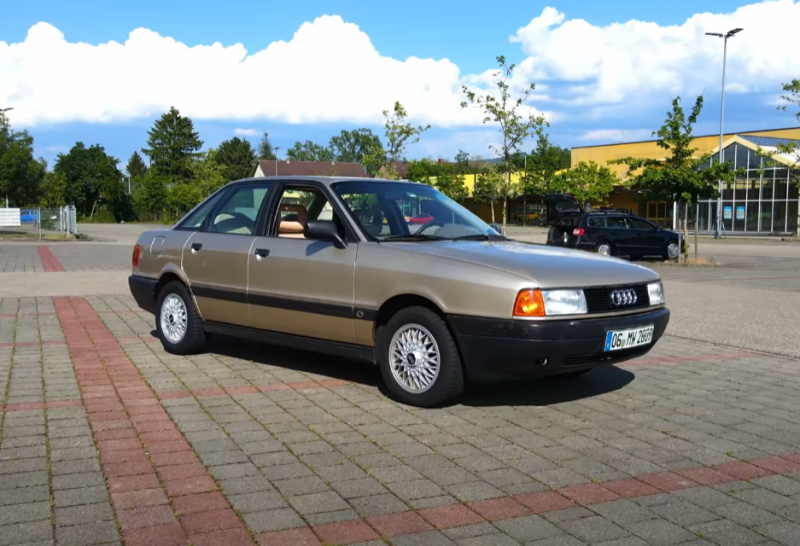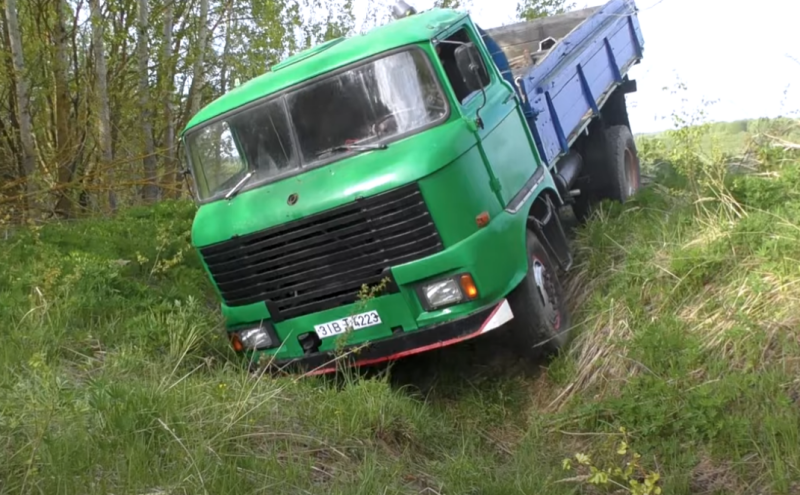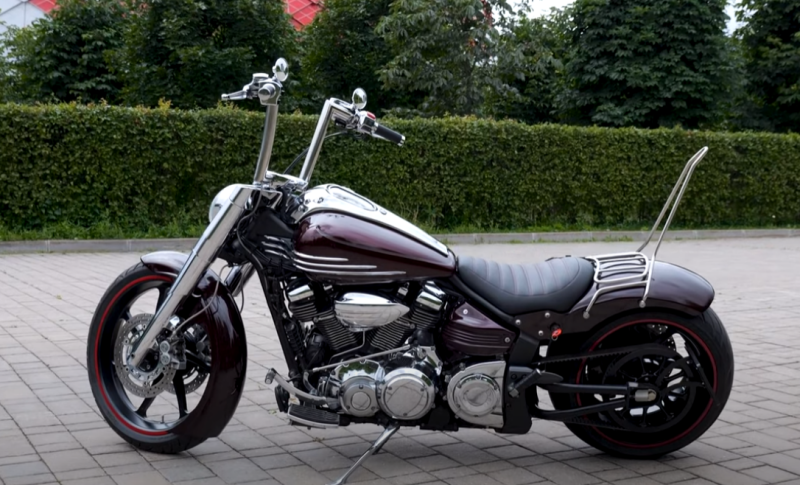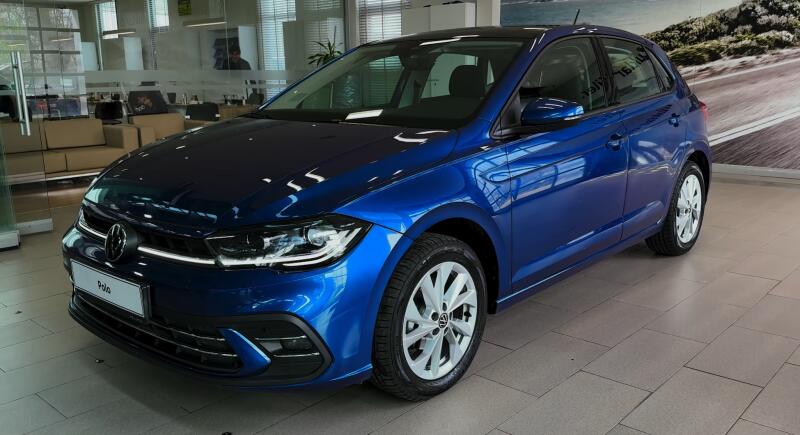Finally, in 1925, the ORUD was created. This organization ensured traffic safety and required its participants to comply with traffic rules.
 Police cyclists were called "scooters". Photo: YouTube.com
Police cyclists were called "scooters". Photo: YouTube.comThe agency also registered vehicles and issued “licenses” to drivers. A little later, the organization of traffic regulation transferred the administrative “paper” functions to the traffic police. Both state structures needed their own transport: do not catch up with violators on a bicycle! And the first cars were "emki".
 The police GAZ-M1 was no different from ordinary cars. Photo: YouTube.com
The police GAZ-M1 was no different from ordinary cars. Photo: YouTube.comInitially, the police GAZ-M1 was not painted in any special colors. But a car at that time was a luxury, including for ORUD.
 The police motorcycle differed from the usual one only by a sign. Photo: YouTube.com
The police motorcycle differed from the usual one only by a sign. Photo: YouTube.comTherefore, motorcycles were more often used, which also did not have special shades: everything was limited to a simple plate on the front fender with the inscription “police”.
Postwar years
By the beginning of the 50s, the technical condition of the ORUD was useless. Captured cars, or "demobilization" - cars decommissioned by the military, went to the policemen for "service". For example, GAZ-67B, which was poorly suited for the ORUD. This state of affairs continued until the start of the large-scale production of Moskvich and GAZ-M20 - Pobed. At the same time, a special order was issued (Order No. 266 from the Ministry of Internal Affairs on 31.12.1953/XNUMX/XNUMX) on painting cars of the Ministry of Internal Affairs in a special color scheme: a combination of a blue tint with red stripes. Plus, special equipment is a speaker at the top, which was installed on a trunk-type device so as not to fiddle with drilling holes in the roof.
 The standard coloring of that time on the "goat". Photo: YouTube.com
The standard coloring of that time on the "goat". Photo: YouTube.comBut there were few such cars, and even those that were at the disposal of the police, most often turned out to be written off from the balance sheet of other state institutions. Therefore, the motorcycle was still "quoted". However, trucks were also used. An example is the GAZ-51 or GAZ-63A, in which the wooden body was dismantled and first the same, and then the all-metal cabin was installed.
 Serial trucks quickly adapted to the needs of the police. Photo: YouTube.com
Serial trucks quickly adapted to the needs of the police. Photo: YouTube.comThe machines were used the most common, with standard motors. Do not forget that in the late 50s and early 60s there were very few cars on the roads, and they did not move as fast as they do today.
Until the 70s, there were no speed limits in the traffic rules of the USSR!
In 1961, two departments - ORUD and GAI, which often performed duplicating functions, were merged into one organization. At the same time, unified traffic rules were introduced. The ORUD-GAI was now monitoring the fulfillment of their requirements.
 Police car in a transitional, turquoise color. Photo: YouTube.com
Police car in a transitional, turquoise color. Photo: YouTube.comIn 1962, police vehicles were “instructed” to switch to turquoise, but many units remained in blue and red.
Auto in the traffic police
By the mid-60s, the Volga was the main police transport. Since 1968, patrol cars have been painted canary with the same blue stripe. The following year, a single department was formed that dealt with all issues of traffic safety on the roads - the traffic police.
 The police GAZ-21 already had more powerful engines. Photo: YouTube.com
The police GAZ-21 already had more powerful engines. Photo: YouTube.comThe coloring of the "Volg" was regulated: the abbreviation "GAI" was obligatory on the roof, and the state emblem was on the door. At the same time, additional "optics" appeared: a searchlight, blue beacons, front "foglights". The service city "Volga" already had boosted engines.
 GAZ-24 - a symbol of the police of the 70s. Photo: YouTube.com
GAZ-24 - a symbol of the police of the 70s. Photo: YouTube.comHowever, cars in the regions were equipped with conventional power units, but adapted to local conditions - A-66 gasoline. Every year, the Ministry of Internal Affairs bought an average of 200 Volga cars. After the start of production of the GAZ-24, the “colored uniform” from the GAZ-21 migrated to a novelty.
 "Moskvich" also "tried on" a police uniform. Photo: YouTube.com
"Moskvich" also "tried on" a police uniform. Photo: YouTube.comIn addition to Volga, other brands of cars were distributed in the department: UAZ, GAZ-69 (more often in the countryside), Moskvich.
Seventies
With the commissioning of AvtoVAZ, of course, the Zhiguli appeared in the traffic police. At first it was the VAZ-2101 "penny" (the modification had the index VAZ-2101-94), later - other models, as they were put on the conveyor.
 Barely leaving the assembly line, the VAZ-2101 immediately appeared in the Ministry of Internal Affairs. Photo: YouTube.com
Barely leaving the assembly line, the VAZ-2101 immediately appeared in the Ministry of Internal Affairs. Photo: YouTube.comThe coloring and equipment of police cars remained the same, except that searchlights gradually disappeared. Color - yellow with a blue stripe, plus a "chandelier", a walkie-talkie.
In addition to the Zhiguli with conventional engines, the traffic police received models with rotary engines. Their high acceleration characteristics, power up to 120 “horses”, were very useful for chasing violators. But the resource of rotary units was short and such machines did not serve in the Ministry of Internal Affairs for long.
Of the cars in the police "lit up" "Moskvich-412": then it was a modern, stylish model, produced in Moscow and Izhevsk. The voluminous trunk, 350 liters, made it possible to place the equipment and inventory necessary for the inspectors.
 This is not a joke: ZAZs also served in the police. Photo: YouTube.com
This is not a joke: ZAZs also served in the police. Photo: YouTube.comIn addition to passenger cars, the RAF-70 minibus, popular in the 2203s, was used, which received an additional “3” at the end of the index. It meant that the special version "22033" was intended exclusively for the needs of the traffic police. The car for the first time received equipment that helps to work at the scene of an accident. This is a stereophotogrammetric system, which made it possible to shoot the scene of an event from the right angles, a typewriter for compiling a protocol, a tape recorder, road signs, cones restricting traffic. The model was assembled in small batches.
 Police RAF in standard coloring. Photo: YouTube.com
Police RAF in standard coloring. Photo: YouTube.comThere was even an experimental version with a sunroof and a periscope. But she did not go to the series.
 The RAF variant with a sunroof did not hit the conveyor. Photo: YouTube.com
The RAF variant with a sunroof did not hit the conveyor. Photo: YouTube.comAnd of course, it is impossible to imagine the then police without the UAZ-469B. The unpretentious car was successfully used both in the city and in the countryside. In the latter case, the UAZ, given the state of Soviet roads in general and outside the city in particular, was in particular demand. The SUV differed from serial "brothers" in an all-metal body, in which there is a compartment for detainees or a cynologist with a dog. UAZ in one form or another and today in the service is now in the police.
Foreign cars
For the first time, a relatively large number of them appeared in the traffic police in 1976: the cars were provided by the then Chancellor of the Federal Republic of Germany, Willy Brandt.
 However, the first foreign car in the traffic police was the Ford Galaxy of the 70th year of release. Photo: YouTube.com
However, the first foreign car in the traffic police was the Ford Galaxy of the 70th year of release. Photo: YouTube.comIt was several cars of the Mercedes W-116 brand, already painted in canary color right at the factory. Other elements of the color scheme were applied already in departments of the department. The car was equipped with a telephone, a walkie-talkie, a beacon control system and other special equipment.
 Mercedes often ended up in the capital, but there were also Leningrad, Kyiv, Minsk. Photo: YouTube.com
Mercedes often ended up in the capital, but there were also Leningrad, Kyiv, Minsk. Photo: YouTube.comThe Daimler-Benz company was the official supplier of the world sporting event and for 5 years sold special purpose vehicles to the Union, including for the police.
 Judging by the numbers, this BMW is registered in Moscow. Photo: YouTube.com
Judging by the numbers, this BMW is registered in Moscow. Photo: YouTube.comIf in the provinces they didn’t even dream of foreign cars, then in Moscow, in addition to Mercedes, the BMW E12 also “served” in the traffic police. They appeared in the capital on the eve of the Olympics-80.
Eighties
Then one of the modern cars, the VAZ-2108, appeared in the service of the Ministry of Internal Affairs. Its special version received a one and a half liter engine, strong fog lights, and an SGU-60 loudspeaker. The cabin has a lot of outlets for the use of special equipment. "Eight" "tried on" the old, yellow and updated, white and blue coloring. It was introduced by a separate Order in 1990.
 VAZ-2108 in yellow coloring at the festival of old cars (Sassenheim, 2018). Photo: YouTube.com
VAZ-2108 in yellow coloring at the festival of old cars (Sassenheim, 2018). Photo: YouTube.comAfter the Union ceased to exist, the model, along with foreign cars that poured into the country, was still used by the traffic police, and later by the traffic police. Along with the VAZ-2108, since 1986, the Moskvich-2141 was also used in the Ministry of Internal Affairs, which also smoothly passed into the post-Soviet police, and then the police.










